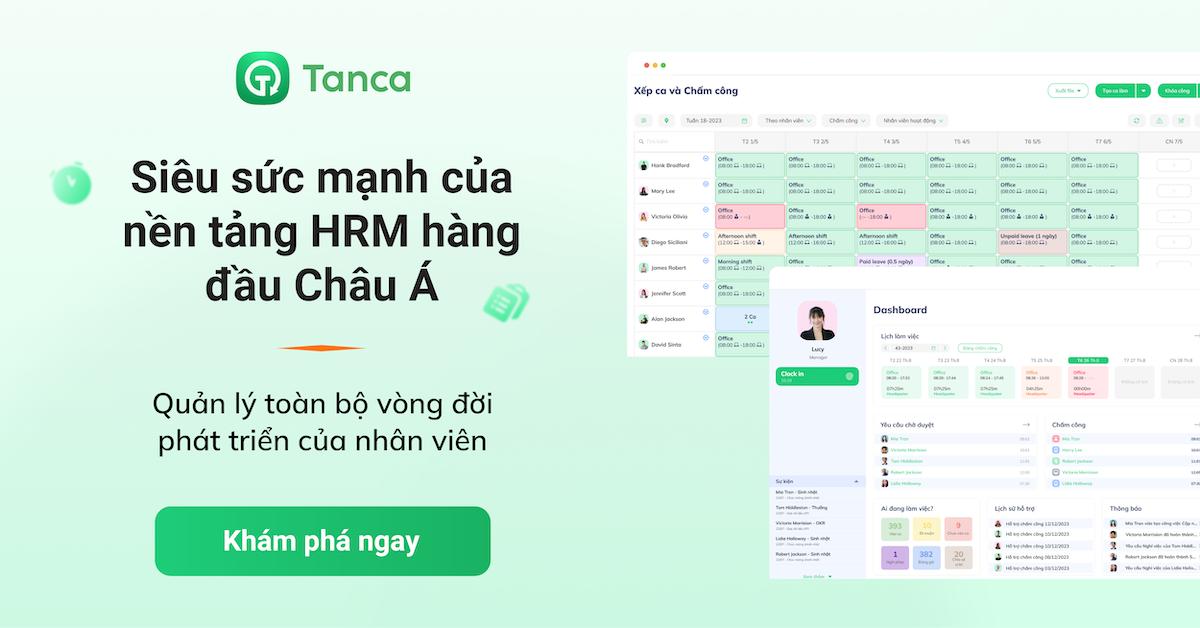Handling layoffs is an increasingly urgent issue in today's dynamic business environment. As we entered 2024, the trend of workforce reductions became more pronounced, with 91 tech companies laying off 24,564 employees in January alone. The layoff announcements in the U.S. climbed by 3% in February, marking the highest level in 11 months due to automation-driven restructuring. Despite these developments, the overall labor market remains robust, with the U.S. economy adding 353,000 jobs and maintaining an unemployment rate below 4% for two years straight. The tech sector continues to lead in job cuts, though with a 55% decrease compared to the same period in 2023, while the finance sector has seen a 56% increase in layoffs from the previous year. In this climate of economic uncertainty and rapid technological change, understanding how to handle layoffs effectively is essential for maintaining organizational stability and supporting affected employees.
What are the reasons behind the current surge in layoffs?

The alarming rate of layoffs is often due to companies conducting them in waves, where hundreds or even thousands of employees lose their jobs on the same day. This mass layoff approach is typically driven by a few key factors:
Economic Uncertainty
- Recession Fears: Concerns about a potential global recession, driven by rising interest rates, inflation, and geopolitical tensions, have led companies to adopt cost-cutting measures, including layoffs.
- Cost-Cutting Measures: Companies are prioritizing financial prudence to maintain profitability, leading to workforce reductions as a means to manage expenses.
Post-Pandemic Adjustments
- Over-Hiring During the Pandemic: Many tech companies expanded rapidly during the COVID-19 pandemic to meet increased demand for digital services. As the economy normalizes, these companies are now downsizing to align with current market needs.
Technological Advancements
- Rise of AI and Automation: The integration of artificial intelligence (AI) and automation is transforming the job market. AI-driven systems are replacing repetitive tasks and even high-skilled jobs, leading to significant layoffs in sectors like tech, finance, and media.
- Efficiency and Cost Reduction: Companies are leveraging AI to improve efficiency and reduce labor costs, resulting in job restructuring and layoffs.
Industry-Specific Challenges
- Tech Sector Volatility: The tech industry is particularly volatile, with rapid changes in technology and customer preferences driving frequent restructuring and layoffs.
- Mergers and Acquisitions: Organizational realignments due to mergers and acquisitions often lead to job redundancies and layoffs.
Strategic Shifts
- Shifting Company Goals: Companies are realigning their workforce to focus on new strategic priorities, which can lead to the elimination of certain roles.
- Investor Pressure: Companies are under pressure from investors to demonstrate financial discipline, leading to workforce reductions to improve profitability.
Regardless of the method chosen, mass layoffs are typically driven by factors beyond just employee performance.
Main Types of Layoffs

Layoffs can be categorized based on duration, voluntariness, and specific reasons, each with its own unique implications for employees and employers.
Based on Duration
Temporary layoffs occur when employees are let go for a short period with the expectation of reemployment. This is common in industries like retail or agriculture, where seasonal layoffs align with fluctuating demand. Furloughs during economic downturns also fall under this category, where employees are expected to return to work once conditions improve.
On the other hand, permanent layoffs involve the permanent termination of employees with no expectation of rehire. This often happens due to company closures or significant downsizing, where positions are eliminated entirely, leaving no opportunity for future employment within the organization.
Based on Voluntariness
Layoffs can also be classified based on whether they are voluntary or involuntary. Voluntary layoffs occur when employees choose to accept a layoff, often incentivized by benefits packages.
For example, companies may offer early retirement packages to senior employees or implement voluntary separation programs, providing severance to those who opt to leave. In contrast, involuntary layoffs are initiated by the employer without the employee's choice, often due to organizational needs. These may result from budget cuts requiring workforce reductions or from mergers and restructuring where certain positions become redundant.
Based on Specific Reasons
Specific reasons for layoffs provide further categorization. Reduction in Time (RIT) involves reducing employees' working hours while keeping them employed. For instance, a full-time employee might be moved to part-time status due to decreased workload or budget constraints.
Furloughs, another specific reason, require employees to take unpaid leave for a set period without official termination.
Examples include government shutdowns where employees temporarily stop working until funding is restored or temporary closures during economic downturns where operations are paused.
Mass layoffs involve large-scale terminations affecting many employees within a short period. This often occurs in industries like tech, where economic pressures or strategic shifts, such as the adoption of automation, lead to the simultaneous elimination of numerous positions.
How to Company Handle Layoffs?

Delivering bad news is never easy, particularly for an employer who genuinely cares about their employees' well-being. However, different situations may require different approaches. Before formally informing your workforce, consider the following strategies:
1. Determine Whether Layoffs Are Necessary
When sales and revenue decline suddenly, business leaders may feel compelled to reduce overhead costs immediately. Although cutting labor costs might seem like an obvious solution, layoffs are not always necessary or the best option. Human Resources (HR) can help decision-makers explore if there are less drastic measures to manage what might be a temporary situation.
2. Explore Alternatives to Laying Off Your Workforce
Before resorting to layoffs, consider other cost-saving measures. For example, Apple avoided mass layoffs during the 2023 tech sector downturn by implementing a hiring freeze, delaying bonuses, and taking other steps to reduce expenses.
One effective alternative is to implement pay reductions. According to a survey by the National Bureau of Economic Research (NBER), more than half of US employees would accept a 10% pay cut to avoid layoffs. To gain employee support for pay cuts, communicate clearly that the goal is to prevent layoffs and that the reductions are temporary. It is also important for company leaders to lead by example and reduce their own salaries. If reducing pay across the board, consider smaller reductions for lower-paid employees to ensure they can still meet their financial obligations.
Another option is to reduce work schedules, allowing employees to work fewer hours or days while maintaining their jobs. This approach can save money without significantly impacting employee morale or productivity. HR can help identify which employees or teams can transition to reduced schedules without compromising essential tasks and goals.
Furloughs are another viable alternative, where employees take unpaid leave for a specified period but are assured that their jobs will be available when they return. This option can be preferable for employees if their benefits, such as health insurance, continue during the furlough.
3. Carefully Consider Which Positions to Eliminate
When laying off employees, it might seem straightforward to target the highest-paid, but this can be shortsighted. High-salaried employees often hold key roles and critical skills essential for operations and growth. Losing them can create a knowledge gap and disrupt projects, hindering recovery and future success.
Effective workforce management requires evaluating the impact of eliminating positions. Retaining key players and top performers is crucial, as they drive innovation, productivity, and overall performance, safeguarding operational efficiency and competitive advantage.
Companies often use a mix of criteria for layoffs:
- Seniority-Based Selection: "Last in, first out" (LIFO) avoids age discrimination but risks losing new talent.
- Employee Status-Based Selection: Prioritizes laying off part-time or temporary workers over full-time employees, but may lose valuable contract workers.
- Skills-Based Selection: Retains employees with critical skills, though complex to evaluate and implement.
- Merit-Based Selection: Uses performance metrics to retain top performers, but can be subjective.
- Multiple Criteria Ranking: Combines seniority, skills, and performance for a fairer approach but is complex to implement.
- Business-Based Criteria: Aligns layoffs with business goals, focusing on critical roles for future growth, potentially losing valuable employees in non-core areas.
4. Mindfully Break the News
When it becomes necessary to inform employees about layoffs, it is important to handle the situation with care and sensitivity. Ideally, conduct private meetings with each affected employee, involving their manager and an HR representative. Communicate the details both verbally and in writing. If face-to-face meetings are not feasible, use video conferencing to ensure a personal touch. Clear and direct communication is crucial to minimize stress and uncertainty.
Additionally, comply with legal requirements such as the federal Worker Adjustment and Retraining Notification (WARN) Act, which mandates that companies with 100 or more employees provide 60 days’ written notice before mass layoffs. Adhering to these regulations while maintaining compassion and transparency is essential.
5. Assist Laid-Off Workers
Losing a job is challenging, especially during economic downturns or periods of high inflation. Show empathy and respect to affected employees by listening to their concerns and helping them feel confident about their future job prospects. Provide ample notice and support such as resume and interview coaching, letters of recommendation, and networking assistance. Address practical questions regarding their departures, including final paychecks, severance packages, and healthcare coverage. Being kind and transparent throughout the process can significantly ease the transition for laid-off employees.
6. Provide Ongoing Support for Remaining Employees
Remaining employees will also need support to cope with the aftermath of layoffs. They may feel overwhelmed by increased workloads and anxious about job security. Maintain open communication, listen to their concerns, and provide honest information about the company’s situation and future plans. Support them through personal meetings, team discussions, and company-wide updates using appropriate technology for your workforce.
How Does Hr Handle Layoffs?
Handling layoffs is one of the most challenging tasks for HR professionals. It requires a balance of empathy, transparency, and legal compliance to ensure the process is as smooth and respectful as possible.
Preparation and Planning
The first step in managing layoffs effectively is thorough preparation and planning. Developing a comprehensive layoff plan is essential. This plan should outline the reasons for the layoffs, the selection criteria, and the timeline. Ensuring that the plan complies with legal requirements and company policies is crucial. Additionally, assembling a dedicated layoff team, including HR, legal advisors, and senior management, helps oversee the process and address any issues that arise.
Clear and Transparent Communication
Clear and transparent communication is vital throughout the layoff process. Before the layoffs, it's important to communicate openly with employees about the company's situation and potential layoffs to minimize rumors and anxiety. During the layoff process, conducting private, face-to-face meetings with affected employees is key. Using a prepared script ensures consistency and clarity, allowing HR to explain the reasons for the layoff and provide necessary documentation. After the layoffs, holding meetings with the remaining employees to explain the situation, address concerns, and reassure them about their job security is important for maintaining morale and trust.
Providing Support and Assistance
Offering support and assistance to laid-off employees is a crucial aspect of handling layoffs with empathy. Providing fair severance packages that include financial support and benefits continuation helps ease the transition. Outplacement services, such as career counseling, resume writing assistance, job search resources, and interview coaching, can aid laid-off employees in finding new jobs. Additionally, offering access to mental health resources and counseling services helps employees cope with the emotional impact of layoffs.
Legal and Ethical Considerations
Ensuring compliance with labor laws and regulations is fundamental to avoid legal repercussions. This includes providing required notices and adhering to contractual obligations. Applying layoff criteria consistently is also important to avoid any appearance of discrimination or unfair treatment, upholding fairness and ethical standards.
Managing the Remaining Workforce
After the layoffs, managing the remaining workforce effectively is essential to maintain productivity and morale. Keeping employees informed about the reasons for the layoffs and future plans through clear communication helps address their concerns and provide reassurance. Monitoring workloads to prevent burnout and offering opportunities for growth and development can help remaining employees feel valued and engaged.
Follow-Up and Evaluation
Finally, following up and evaluating the layoff process is necessary to improve future handling of similar situations. Gathering feedback from both laid-off and remaining employees helps HR understand the impact of the layoffs and identify areas for improvement. Using this feedback to refine layoff processes ensures continuous improvement and better management of future layoffs.
By balancing empathy, transparency, and legal compliance, HR can navigate the difficult process of layoffs more effectively, maintaining respect and support for all employees involved.
Conclusion
In conclusion, navigating layoffs requires careful planning, clear communication, and thoughtful consideration of long-term goals. Utilizing various project management tools, such as scheduling software and human resource management software, can streamline the process and ensure efficiency. Tools like Tanca, which offer comprehensive features for employee time tracking and HR management, can be particularly valuable in maintaining productivity and morale.
By focusing on retaining key talent and leveraging tools like project scheduling software, companies can manage layoffs strategically while supporting their employees through transitions. Providing resources and fostering a positive workplace culture through employee recognition and effective HR operations ensures that the organization remains resilient and prepared for future challenges.








